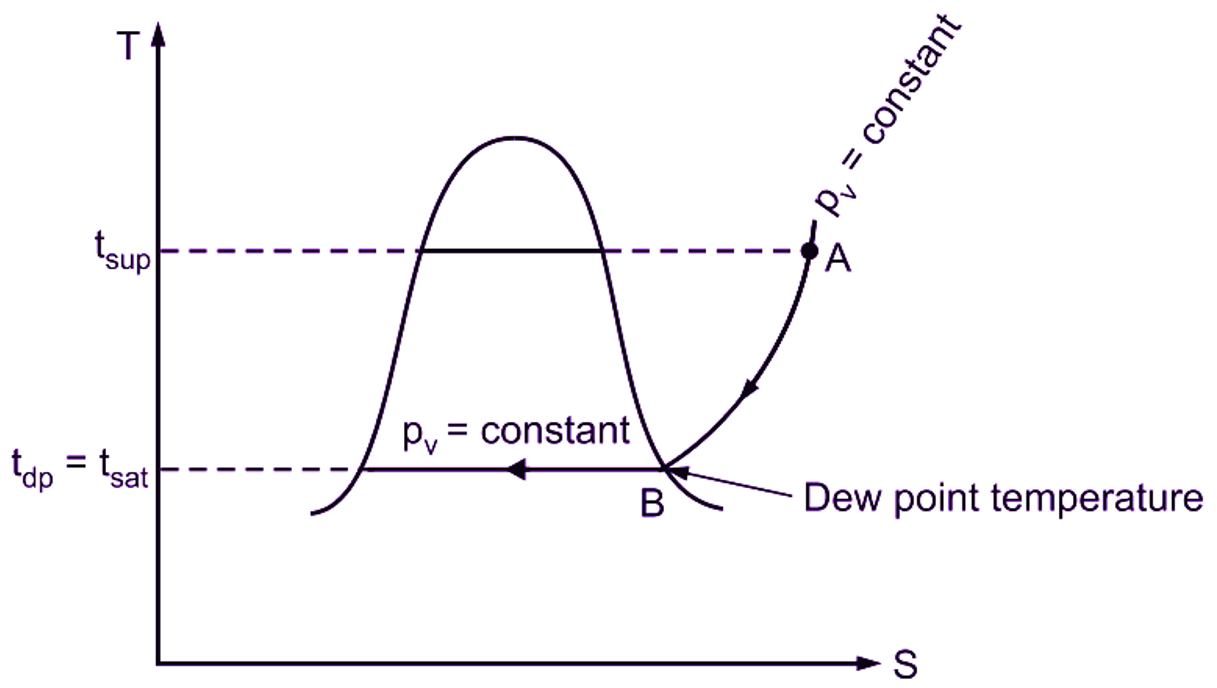Dew point temperature is defined as, “the temperature of air recorded by a thermometer, when the moisture (water vapour) present in it begins to condense”.
Dew point depression is “the difference between the dry bulb temperature and dew point temperature of air at any point”.
In other words, the dew point temperature is the saturation temperature (tsat) corresponding to the partial pressure of water vapour (pv). It is, usually, denoted by tdp. As the value of pv is very small, therefore saturation temperature corresponding to ρv is very small and even less than dry bulb temperature. Thus, the water vapour in air exists in the superheated state and moist air containing moisture in superheated state is said to be unsaturated air. Point ‘A’ represents this condition. Now, if we cool the mixture at constant partial pressure shown by curve A-B; the water vapour will be cooled, until it reaches the saturated state shown by point. At this point ‘B’, first drop of dew is formed and hence, the temperature at this point is called as dew point temperature. Further cooling will result in condensation of water vapour along constant temperature line, i.e. tdp = tsat. Thus, the temperature, at which, water vapour begins to condense is called as dew point temperature.

Fig. 1: Dew Point Temperature
Note: When the partial pressure of water vapour (pv) is equal to the pressure (ps) corresponding to saturation temperature, then the water vapour is in the saturated condition and the air will be saturated air. This condition is represented by point ‘B’ in Fig. 1.
Significance of Dew Point Temperature
- The dew point temperature is associated with relative humidity.
- Air having a high relative humidity indicates that, its dew point temperature is closer to its dry bulb temperature.
- Air having 100
- Air is said to be saturated air, if its relative humidity is 100
- When the moisture content remains constant and temperature goes on increasing, then relative humidity and hence, difference between dry bulb temperature and dew point temperature goes on decreasing.
- If the temperature of air becomes equal to or less than dew point temperature, then water will leave the air and air will be dehumidified.
- If air is saturated (i.e. relative humidity is 100
Practical Applications of Dew Point Temperature
Following are the practical applications of dew point temperature.
- Formation of dew early in the morning.
- In case of vapour absorption system, rectifier is a cooling coil, which cools water vapours below dew point temperature.